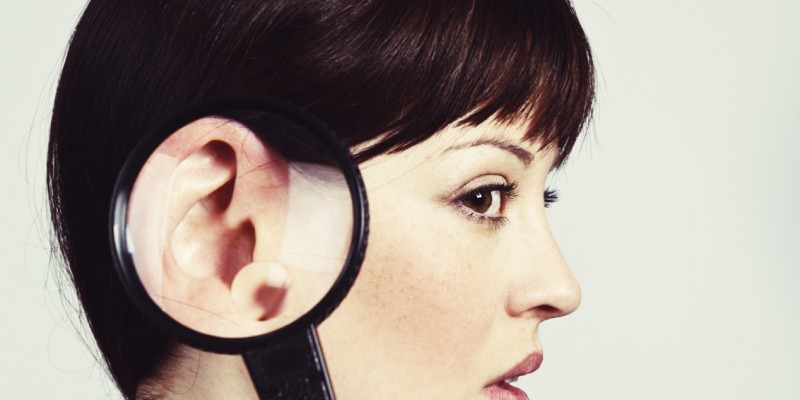
The Picture of Health
Sonography at the forefront of patient care
By Naomi Sheehan
When you hear the word “ultrasound,” a grainy black and white image of a baby in the womb probably comes to mind. Sonography, the imaging technique used in ultrasounds, is used to check up on the health of a pregnancy – and so much more.
“Sonography and ultrasound are exchanged frequently, but sonography is becoming more popular,” says Sheryl Goss, President of the Society of Diagnostic Medical Sonography and chair of the Sonography Department at Pennsylvania’s Misericordia University.
Goss has been in the field for 34 years. She says advances in technology have driven massive innovations in medical care and expanded the role that sonography plays.
“The field has changed dramatically,” she says. “Predominantly, sonography used to be for looking at unborn babies and abdominal imaging, such as looking for gallstones.
“Now we are imaging from head to toe, scanning the unborn to the geriatric,” Goss states. “We look at the brain, the neck, the chest, abdomen, circulatory system, and look for everything from cardio issues to cancer.
“We’re the front line in evaluating the normal from the abnormal. We’re the first ones to know if something is abnormal.”
How sonography works
Simply put, sonography makes pictures of what’s going on inside the body using sound. “High frequency sound waves move particles,” Goss explains, “and that particle movement creates reflections that return back to the machine. The machine represents those reflections by placing black and white dots.”
The reflections, processed by the equipment, make up the pictures created for the familiar pregnancy ultrasounds. “The imaging has improved a lot,” she adds. “Images are a lot smoother and have decreased the ‘grainy’ appearance.”
The procedure is safe and “non-invasive.” Sonography is increasingly used to survey the body, which reduces the need for more invasive procedures, like drawing blood. If an invasive procedure is needed, sonography can help by guiding the needle during placement.
“We’re also seeing a boom in musculoskeletal sonography,” says Goss. “Sonography is cost effective, but even more importantly, sonography is dynamic and in real-time. Patients can move and target areas of pain during the procedure, which can lead to a more accurate diagnosis.”
This differs from other well-known types of medical imaging technology, like X-rays or MRI scans. “With MRI, you have to hold still,” she notes, “so your imaging ‘slices’ are in that position.” Because of this, the images produced by MRI scans are still-frame cross-sections of an area.
“With ultrasound, you can have the transducer on the muscle and have the patient move, so if there’s pain in a particular position you can see it in real-time and in motion.”
Are you a good fit?
The field is projected to grow by 39 percent through 2022, according to the Bureau of Labor Statistics, and the median annual salary is a solid $60,350. Most entry level positions can be attained with a two-year degree and professional certification.
Optional paragraph explaining Your Community College program, how to enroll and contact information. Apply online at yourcc.edu/sonography or call 000.000.0000 today.
To succeed as a diagnostic medical sonographer, as with most careers in the medical field, compassion and good social skills are essential. “You also need to love learning, since sonography requires continual learning,” Goss states.
“A sonographer needs to possess good communication skills and desire to be around patients.
“One of the things different from doing an X-ray is that we’re with the patient throughout the entire study. We’re not on the outside of the room,” she explains. “We’re in the room, and interacting with them. That’s why we like the field.
“Sonography is part of taking that next step to figure out what is happening, and what else should be done. We don’t diagnose, but we write and communicate our findings and build strong relationships with the physicians.”
Goss adds: “It takes curiosity and enthusiasm. When you find something on your images, it becomes like solving a mystery.”
Pull Quote:
“The field has changed dramatically… we are imaging from head to toe, screening the unborn to
the geriatric.”
Box:
Diagnostic Medical Sonographers
Median pay (2012): $60,350 per year, $29.02 per hour
Growth through 2022: 39% (much faster than average)
Number of jobs (2012): 110,400
New openings through 2022: 42,700
Box:
Student success story
Headline Describing Reasons for Success
Student/graduate Name
Choose either a conventional profile structure or try a Q and A format. Keep the tone conversational. Let your subject’s personality shine through. (200 words).
Lorem ipsum dolor sit amet, consectetur adipiscing elit. Suspendisse pretium nisi non lacus posuere auctor. Mauris porttitor erat nunc, nec auctor lectus dictum at. Donec elementum lacus eu eros aliquet, vitae sodales nisl pharetra. Proin semper nisi sed scelerisque interdum. Nulla facilisi. Quisque porttitor massa sed metus tempor elementum. Morbi finibus, purus et venenatis consectetur, ex orci commodo dolor, non eleifend orci dui sit amet elit. Vivamus at nunc in sem hendrerit gravida posuere sit amet velit.
Subhead
Praesent sagittis pellentesque mauris, eu laoreet nulla sagittis ac. Quisque tellus leo, scelerisque quis varius a, varius non magna. Vivamus interdum leo vel lorem malesuada gravida. Curabitur pretium ante non lacus vestibulum posuere. Proin vehicula dapibus dictum. Proin volutpat augue non congue imperdiet. Cras vulputate commodo posuere. Sed nibh dui, imperdiet sit amet fermentum id, faucibus id nunc. Nullam tristique pretium ultricies. Morbi sagittis dolor scelerisque urna auctor, in interdum erat consequat. In lacus tortor, aliquam nec mattis vitae, efficitur et eros. Vivamus sit amet ligula sit amet erat finibus mattis at vitae ipsum. Aenean rutrum blandit tristique.






